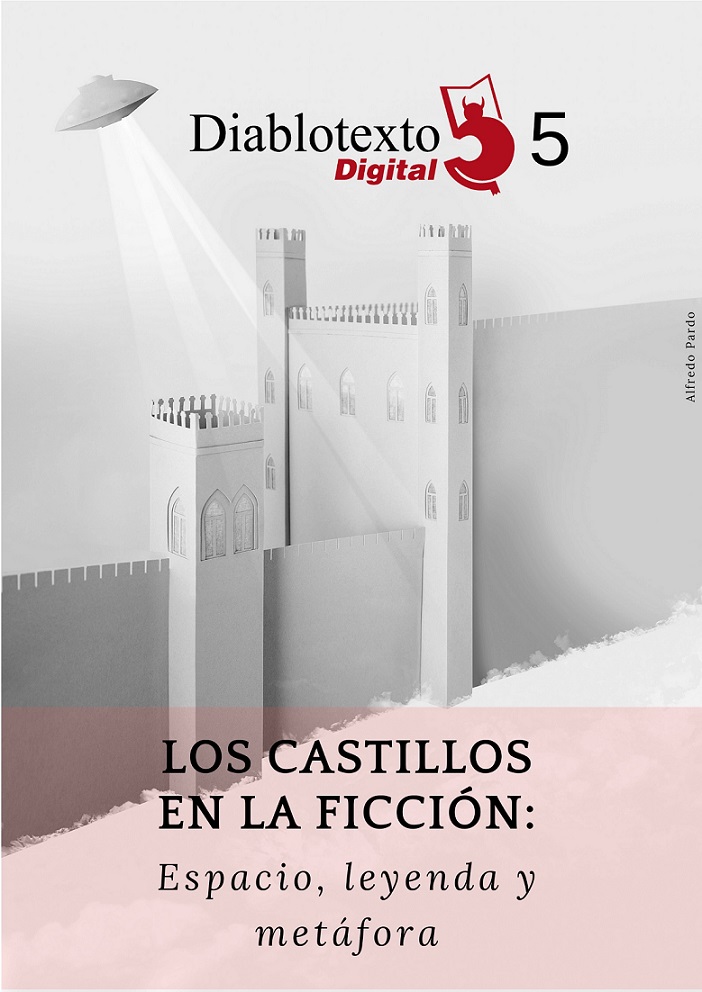Melancholy in its Castle. Ortega and the Tradition of the Asthetic State
DOI:
https://doi.org/10.7203/diablotexto.5.13783Keywords:
Aesthetic State, Melancholy, Ortega y Gasset, Schiller Abstract
Abstract
This article explores the bonds between reflection and melancholy in Modernity. The man of letter tries to shape a perfect society through his writings. An example of this idea is Ortega’s version of the Aesthetic State Meditations on Quixote (1914). The Aesthetic State emerges as a concept in Germany in 18th century, based on a mythified conception of Ancient Greece as a civilization that was able to reconcile reason and sensitivity as a premise to generate a perfect society. The inconvenience that moderns find, according to Schiller in the Letters for the Aesthetic Education of Man (1795), and Ortega in his Meditations, is that both domains, reason and sensitivity, are dissociated in modern times, and aesthetics only offers a precarious solution to that problem.
 Downloads
Downloads
 References
References
Adorno, Theodor Wiesengrund y Max HORKHEIMER [1944] (1981). Dialektik der Aufklärung. Frankfurt am Main: Fischer Taschenbuch [Edición en castellano: Dialéctica de la Ilustración. Intr. y trad. Juan José Sánchez. Madrid: Editorial Trotta, 2003].
Agamben, Giorgio (1977). Stanze. La parola e il fantasma nella cultura occidentale. Torino: Einaudi.
Agamben, Giorgio (2007). Il regno e la gloria. Per una genealogia teologica dell'economia e del governo. Homo sacer II, 2. Vicenza: Neri Pozza.
Azaña, Manuel (1966-1968). Obras completas. Ed. De Juan Marichal. México D.F.: Ediciones Oasis.
Bienczyk, Marek [1998] (2014). Melancolía. De los que la dicha perdieron y no la hallaran más. Barcelona: Acantilado.
Cerezo Galán, Pedro (1984). La voluntad de aventura. Aproximamiento crítico al pensamiento de Ortega y Gasset. Barcelona: Editorial Ariel.
Cerezo Galán, Pedro (1993). “El pensamiento filosófico: de la generación trágica a la generación clásica. Las generaciones del 98 y del 14”. En Pedro Laín Entralgo (coord.), La edad de plata de la cultura española (1898-1936), Madrid: Espasa-Calpe, pp. 131-315.
Cerezo Galán, Pedro (1994). “Ortega y la generación de 1914: un proyecto de ilustración”, Revista de Occidente, 156, pp. 5-32.
Charle, Christophe (1990). Naissance des intellectuels: 1880-1900. Paris: Les Éditions du Minuit.
Charle, Christophe (1996). Les Intellectuels en Europe au XIXe siècle. Essai d’histoire comparée. Paris: Éditions du Seuil.
Chytry, Josef (1989). The Aesthetic State: A Quest in Modern German Thought. Berkeley, CA: University of California Press.
Close, Anthony (1978). The Romantic Approach to Don Quixote: A Critical History of the Romantic Tradition in Quixote Criticism. Cambridge, UK | New York: Cambridge University Press.
Elorza, Antonio (1984). La razón y la sombra. Una lectura política de Ortega y Gasset. Barcelona: Anagrama. España. Semanario de la vida nacional. 9 volúmenes. Intr. Salvador de Madariaga. Vaduz [Liechtenstein]: Topos Verlag.
Fichte, Johann Gottlieb [1794] (2002). Einige Vorlesungen über die Bestimmung des Gelehrten / Algunas lecciones sobre el destino del sabio. Ed. bilingüe de Faustino Oncina Coves y Manuel Ramos Valera. Epílogo de Wolfgang Janke. Madrid: Ediciones Istmo.
Gracia, Jordi (2014). José Ortega y Gasset. Madrid: Taurus | Fundación Juan March.
Lepenies, Wolf (1969). Melancholie und Gesellschaft. Frankfurt am Main: Suhrkamp Verlag.
Lepenies, Wolf (2007). Qu'est-ce qu'un intellectuel européen: les intellectuels et la politique de l'esprit dans l'histoire européenne. Chaire européenne du Collège de France, 1991-1992. Éd. Dominique Séglard. Paris: Éditions du Seuil.
Martín, Francisco José (2014). “Hacia el 14. Para una génesis del movimiento intelectual en España”. En Francisco José Martín (ed.), Intelectuales y reformistas. La Generación de 1914 en España y en América. Madrid: Biblioteca Nueva, pp.17-46.
Menéndez Alzamora, Manuel (2006). La Generación del 14. Una aventura intelectual. Madrid: Siglo XXI.
Navarro Ledesma, Francisco (1905). El Ingenioso hidalgo son Miguel de Cervantes Saavedra. Sucesos de su vida contados por Francisco Navarro y Ledesma. Madrid: Imprenta Alemana.
Ortega y Gasset [1914] (2004): Meditaciones del Quijote. Ed. José Luis Villacañas. Madrid: Editorial Biblioteca Nueva.
Ortega y Gasset, José [1914] (2007).“Vieja y nueva política” y otros escritos programáticos. Ed. Pedro Cerezo Galán. Madrid: Biblioteca Nueva.
Ortega y Gasset, José (2004-2012). Obras Completas. 10 tomos. Ed. Fundación Ortega y Gasset, Centro de Estudios Orteguianos. Madrid: Taurus.
Rancière, Jacques (1995). La Mésentente. Politique et philosophie. Paris: Galilée.
Sainte-Beuve, Charles Augustin [1844-1870] (1876). Portraits de femmes. Paris: Garnier.
Schaeffer, Jean-Marie (1983). La Naissance de la littérature: la théorie esthétique du romantisme allemand. Paris: Presses de l’École Normale Supérieure.
Schiller, Friedrich [1793-1795] (1990). Kallias. Cartas sobre al educación estética del hombre / Kallias. Über die ästhetische Erziehung des Menschen. Ed. bilingüe Jaime Feijóo y Jorge Seca. Barcelona: Anthropos.
Starobinski, Jean (2012). L'Encre de la mélancolie. Paris: Éditions du Seuil.
Unamuno, Miguel de [1905] (1988). Vida de don Quijote y Sancho. 1905. Ed. Alberto Navarro. Madrid: Ediciones Cátedra.
Winckelmann, Johann Joachim [1763] (2002-2012). Geschichte der Kunst des Alterthums. Mainz am Rhein: Verlag Philip von Zabern.
Downloads
Published
How to Cite
-
Abstract440
-
PDF (Español)247
Issue
Section
License
Licencia de reconocimiento de Creative Commons “Reconocimiento - No Comercia l- Sin Obra Derivada
Authors who publish with this journal agree to the following items:
The authors will keep their copyright and guarantee the journal the right of first publication of their work, which will be simultaneously subject to the Creative Commons license that allows third parties to share the work indicating its author and its first publication in the journal. The authors may adopt other non-exclusive license agreements to distribute the version of the published work (e.g., depositing it in an institutional telematic file or publishing it in a monographic volume), with an acknowledgment of its initial publication in this journal. The authors are allowed and encouraged to disseminate their work through the Internet (e.g., in institutional telematic archives or on their website) before and during the submission process, which can produce interesting exchanges and increase citations of the published work. (See Effect of Open Access)




